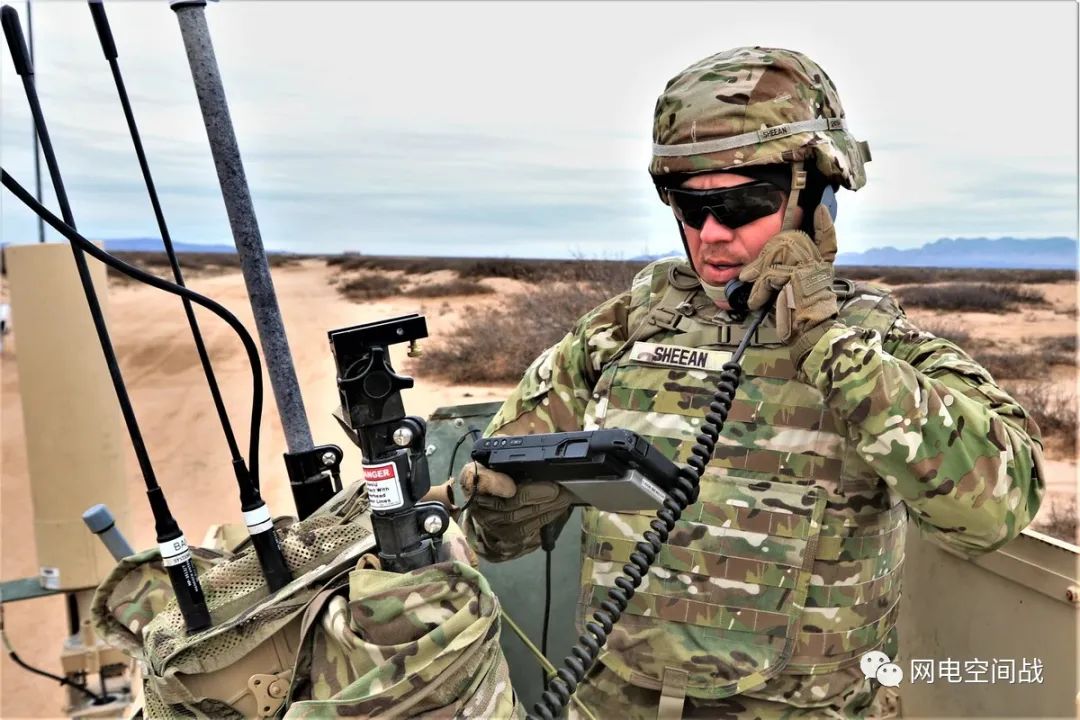主要内容
随着美军从与全球反恐战争中技术上比较弱的敌人作战,转向技术先进的国家行为体,五角大楼正在评估其使电子战系统现代化的方法;
战略和预算评估中心于去年11月发布了一项由国会授权的有关计划和方案的研究,该研究认为,重新获得电磁频谱方面的实力不仅仅是可以通过增加资金来解决的问题;
五角大楼国防负责研究和工程的高级主管詹姆斯·法斯特(James Faist)在9月份表示:“这是结构性的弱点。”Faist说,在电磁频谱中,实现战场优势的关键是实现基础架构上的努力,他称之为完全网络化的指挥、控制和通信(FNC3)。FNC3是现代化的重中之重,是一个涉及装备和武装部队的计划。他说,目标是为未来的系统创建一种指挥和控制数据体系结构,该体系结构“在同行竞赛中既强大又可生存,并且很有用,可以启用先进的分布式电子战技术”。他说,将其实施到系统中并有效地联网将决定谁主导电磁频谱。这种架构大约在一年前完成,比仅专注于电子战的系统要大得多,后者旨在干扰敌人的频率,感知敌人的信号并保护自己的系统;
考虑到前所未有的大量发射信号和信息的系统,数据也可能在系统如何设计以应对未来冲突中扮演重要角色。五角大楼前电子战总监威廉·康利表示,“如果我们不是从尝试指定特定性能参数的角度来考虑问题,而是从一个决定开始,那么我们将尝试使用该系统执行哪些军事行动?我需要什么信息然后可以让人们做出决定,然后我应该如何设计所有不同的硬件,软件,算法,存储设备,无论它可能是什么,我需要能够最大程度地做到这一点,以一种合乎逻辑的方式做出正确的决定”。
The Pentagon is developing modern architectures to dominate the electromagnetic spectrum
Mark Pomerleau

The Pentagon is working to develop new and modern architectures to stay ahead in the electromagnetic spectrum. (Staff Sgt. Felicia Jagdatt/U.S. Army)
WASHINGTON — As the U.S. military shifts away from fighting technologically inferior enemies in its global war on terror, and toward sophisticated state actors, the Pentagon is reviewing its approach to modernizing electronic warfare systems.
A congressionally mandated study on plans and programs published last November by the Center for Strategic and Budgetary Assessments asserted regaining prowess in the electromagnetic spectrum isn’t merely an issue that can be solved with increased funding.
“It’s architectural,” James Faist, director of defense research and engineering for advanced capabilities at the Pentagon, told C4ISRNET in a September interview.
In the electromagnetic spectrum, Faist said, the key to enabling battlefield dominance is achieving an underlying architectural effort he called fully networked command, control and communications. FNC3 is a modernization priority and a program that involves his outfit and the armed services. The goal, he said, was to create a command-and-control data architecture for future systems that is “robust and survivable and useful in a peer contest that enables advanced, distributed EW techniques.”
Implementing that into systems and networking them effectively will determine who dominates the electromagnetic spectrum, he said.
This architecture, which was finished about a year ago, is much larger than systems solely focused on electronic warfare, which are designed to jam enemy frequencies, sense enemy signals and protect friendly systems.
Data will also likely play a big role in how systems are designed for future conflict, considering the unprecedented amount of systems emitting signals and information.
“If we think about the problem not from a standpoint of trying to specify a particular performance parameter, but if we more so begin with what decision, what military operation are we attempting to use this system to do? What information do I need to [then] allow a human to make that decision, and then how should I architect all of the different hardware, the software, the algorithms, the storage, whatever it may be, such that I can in the most logical way possible allow a human to make that good decision?” said William Conley, the former director of electronic warfare at the Pentagon.
“When we look into the future at what is it the government is going to want access or insight from, I don’t think the government actually wants to buy the data," he told C4ISRNET in a September interview. "The government wants to buy the insight into how to design a better system based off an understanding of that data that resides on the commercial side.”
The other aspect to the architecture and engineering process is people.
“We need to dramatically improve the engineering competence within the federal government,” Faist said. “We need to have support within the services to rebuild their engineering capability in house. You need smart buyers. Smart buyers can make really good buying decisions on what’s needed, and they can do the better engineering.”
Without that, Faist said, “we get into a lot of trouble on programs.”
In with the old
As the Defense Department works on new systems for the 2030 time frame, it’s also balancing updates to aging legacy systems.
Faist called it a “dilemma we have in the department,” noting the old systems are expensive to maintain because of their designs.
“When you look at what was done in the last 10 years, it’s mostly patching legacy systems to be more survivable," he said. "The legacy systems, you can only go so far with that against this type of adversary that ... is accelerating their modernization and rapid pace. That is not going to stay ahead of them.”
His shop helps with this effort alongside the Pentagon’s acquisition and sustainment office, but he said the future is in open-architecture standards, which allow for rapid upgrades because they are mostly software-based.
When a new threat presents itself, the thinking goes, an update can quickly be uploaded to the system. This is a significant departure from the hardware-based era of the Cold War. At that time, if a new signal was discovered, it would have to be deconstructed in a controlled environment, and a countermeasure would have to be developed and hand-delivered to the field.
声明:本文来自网电空间战,版权归作者所有。文章内容仅代表作者独立观点,不代表安全内参立场,转载目的在于传递更多信息。如有侵权,请联系 anquanneican@163.com。
